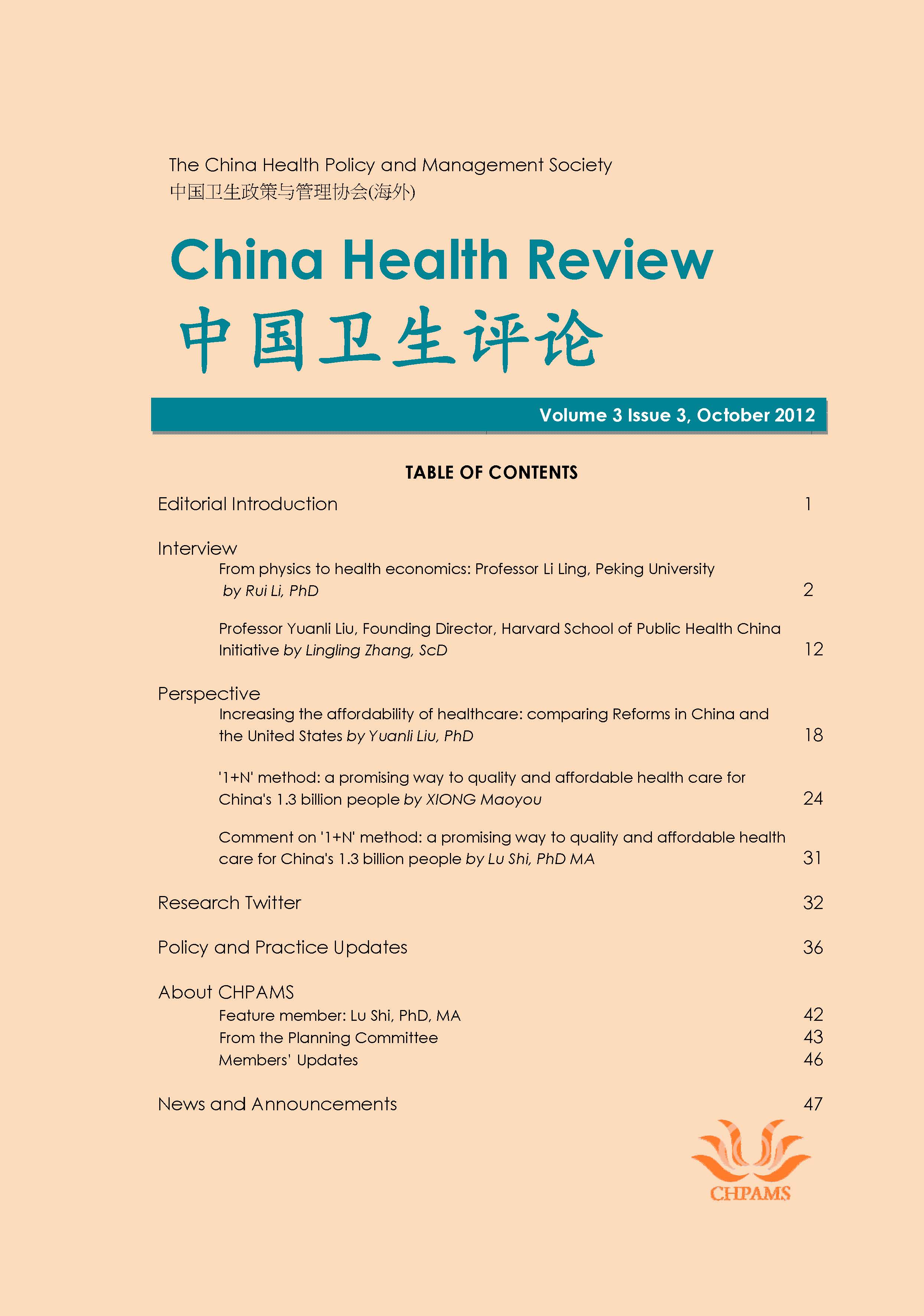'1+N' method: a promising way to quality and affordable health care for China's 1.3 billion people 只有用“1+N”全民健康保险思路才能让中国13亿人看病不贵不难
Palabras clave:
China, Healthcare reformResumen
Although recent healthcare reform has expanded health insurance coverage and increased the coverage for selected major diseases, healthcare is still a heavy financial burden for many patients. The advance payment total method commonly used by government health insurance sector in paying medical care providers cannot effectively control the waste and inefficiency in the use of health insurance funds. As a result, abuse of medical examination and surgery, shirking critically ill patients, arbitrary medical charges, indiscriminate drug prescription, artificially high drug prices, and fraudulent insurance claims still exist in some medical institutions.
To make healthcare accessible and affordable to China’s 1.3 billion people, the author proposed that "1 + N" universal health insurance would be a solution where “1” represents one model—the “413” model, and “N” stands for a number of corresponding supporting measures.
The “413” model has been pilot launched in Jiu Jiang City among employees of some financially challenged state-owned enterprises and has been proven effective in improving health service quality and containing healthcare budget. This model includes “four fixed,” “one freedom,” and “three-party payment.”
The four fixed are fixed visiting hospital for the patient, fixed per capita health care costs (based on age and covering clinic, hospital, and preventive care), fixed health care responsibility, and fixed number of patients for a given hospital. Based on this, the government health insurance sector assigns the total health care costs to contracted hospitals (or hospital groups) and the hospitals keep any left-over in costs but will not get reimbursed if costs overrun. The “one freedom” means the patients have the freedom of changing their hospital choice once a year when unsatisfied with current hospital. Under the “three party payment,” the hospital pays the most part of the healthcare costs, the patient pays a small portion, and the government health care agencies pay the special costs caused by major infectious diseases or natural disasters.
This model requires a number of supporting measures. First, a close network of urban and rural community general hospital group must be established to effectively cover clinic, hospital, and preventive care with the fixed per capita health care costs. Second, to improve the efficiency and service quality of public hospitals, private general hospitals or hospital groups must be encouraged. Third, allow patients to choose voluntarily between the 413 model and other health care management models according to the ability to pay of the individuals and their employers. Fourth, hospitals should improve management in order to control cost and enhance service quality. Fifth, government health care funds should focus on the universal health insurance which encourages prevention and early treatment of diseases, especially for the impoverished people. Finally, government health care agencies should give the hospitals the right of using the per capita health insurance funds below the threshold. Government agencies should focus on the coordination of the funds for major diseases above the threshold.
In summary, the “1+N” method bases on the “413” health insurance model and calls for a number of supporting measures. It will be effective in improving the health service quality and making healthcare affordable to China’s 1.3 billion people.

